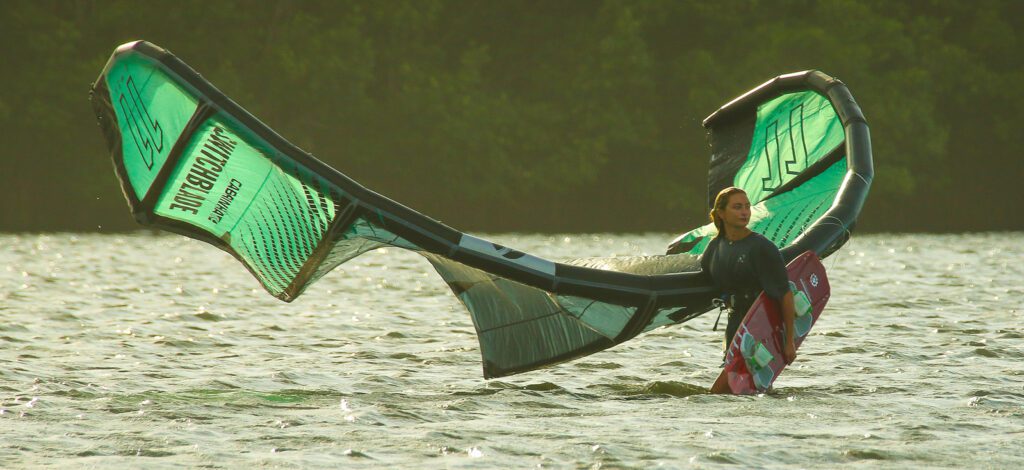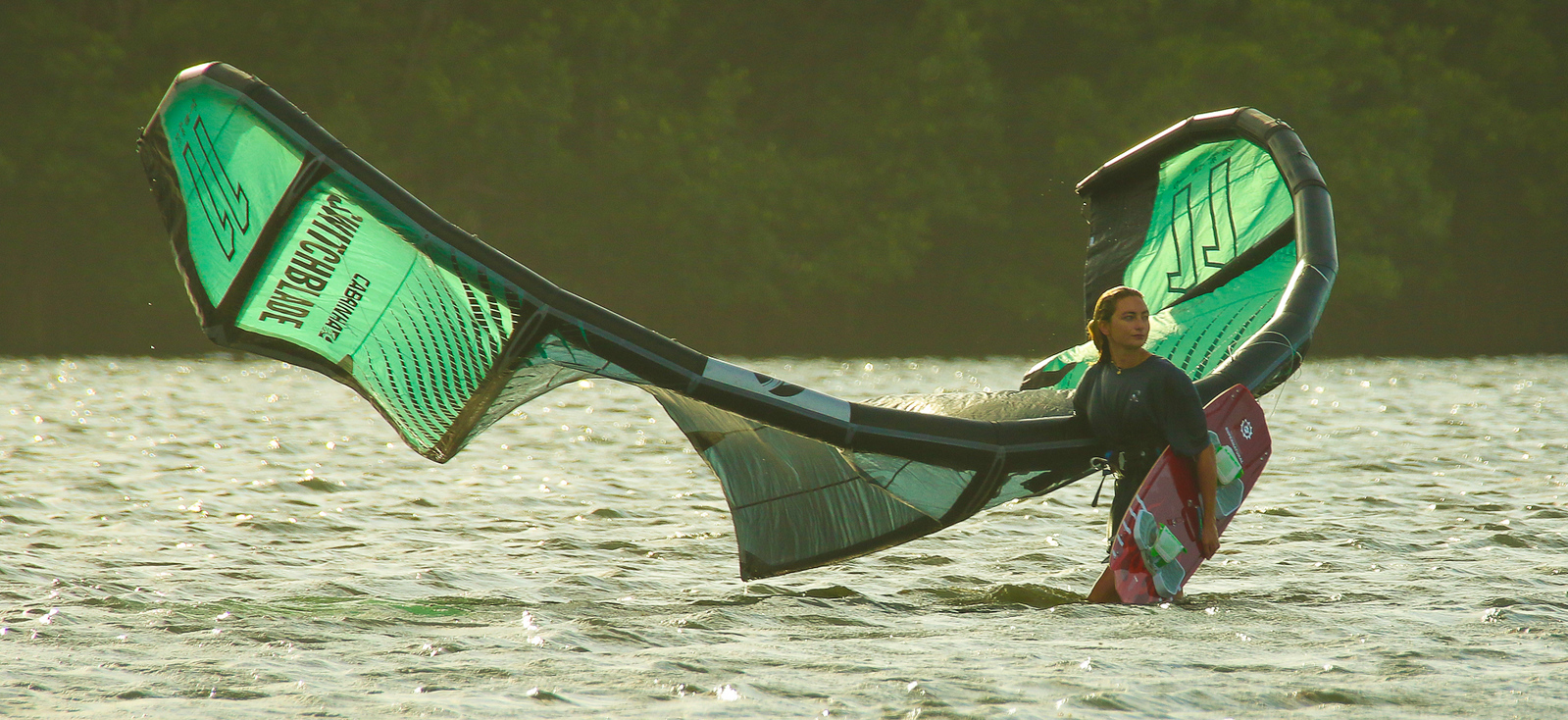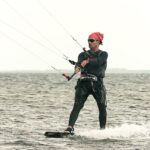
Everything you need to know before buying a kite.
Kiteboarding and kitesurfing are exciting, adrenaline-filled activities that have become increasingly popular recently. Whether you’re a beginner or an experienced rider, having the right kiteboarding or kitesurfing can make a huge difference in your experience. In this blog post, we’ll cover everything you need to know before you buy a kiteboard or kiteboarding, from choosing the right size and style to understanding the materials and construction used to make them. Read on to find out how to get the best kiteboard or kitesurf for your needs!
What is kiteboarding?
Everything you need to know before buying a kite: Kiteboarding is an exhilarating sport that combines aspects of surfing, wakeboarding, and windsurfing. It involves using a kite and a specialized board to propel the rider across the water. The kite is connected to the rider’s harness and bar, allowing them to be pulled through the water at up to 50 miles per hour. Kiteboarders typically ride in flat, shallow water or on waves, depending on their chosen spot. Kiteboarding can occur in any windy area, from beaches to open ocean spots.
Kiteboarders use two different types of boards: Twin Tip boards, which are designed for freestyle tricks and stunts, and directional boards, which are designed for wave riding. Twin Tip boards have symmetrical tips with both ends of the committee looking the same, while directional boards are longer and narrower than Twin Tip boards and have a distinct nose and tail. The commission’s size depends on the rider’s size and skill level. Beginners should opt for a giant board for stability.
In addition to a kiteboard, kiteboarders must have a harness, bar, and safety release system. The bar controls the kite and keeps it aloft in the wind, while the harness keeps the rider connected to the kite. Safety releases can be attached to the harness or bar to disconnect the rider from the kite in an emergency instantly.
Kiteboarding can be exciting and thrilling, but it is essential to ensure you are adequately prepared before taking off.
What are the different types of the kite?
Kites come in all shapes and sizes, but there are four main categories that you should be aware of when purchasing a kite.
The first type is the “C-kite.” This is the most common type, shaped like a crescent moon. The wingspan of this kite can vary depending on size, but they are typically shorter than other types of kites. C-kites offer excellent performance, but they require a bit more skill to fly.
The second type is the “Bow-kite.” This kite has a longer wingspan than the C-kite, usually shaped like an arch or bow. It is more stable in the air and more accessible to fly than a C-kite, making it an excellent choice for beginners. Bow-kites also generate more power than a C-kite, making them great for jumping and racing.
The third type is the “Hybrid-kite.” This is a combination of the C-kite and Bow-kite, and it offers the best of both worlds. Hybrid kites can generate a lot of power and are easy to fly, making them an excellent choice for advanced riders.
Finally, there are Foil-kites. These kites are shaped like airplane wings and perform excellently in light winds. They are more challenging to fly than other kites and require more skill, so they are best suited for experienced riders.
No matter which type of kite you choose, read up on its characteristics and how it flies before purchasing. Each class has advantages and disadvantages, so you should pick one that suits your level of experience and riding style.
How do I choose the right size kite?
Choosing the right size kite for kiteboarding or kitesurfing is essential for optimal performance and safety. The kite size will depend on your body weight, the wind speed, and the type of kiting you want to do. Generally, more giant kites are more suitable for heavier riders, and lighter kites are better suited for lighter riders.
When choosing a kite, you should always consider the wind speed range that the kite is intended for. It is essential to get a kite that works well with the conditions you expect to find at the beach. Kites come in various sizes, ranging from 5 meters to 20 meters. Generally, smaller kites are used for light winds, and more giant kites are used for stronger winds. If you are a beginner, starting with an intermediate-sized kite that can work in both light and moderate winds is best.
In addition to size, you also need to consider the type of kite you want to purchase. Kites come in several shapes, including delta, C-shaped, SLE (supported leading edge), hybrid, and LEI (leading edge inflatable). Each type has its characteristics and works best in different conditions. Delta kites are great for beginners as they are stable and easy to control. C-shaped kites offer more power, agility, and range than delta kites and are great for intermediate riders looking for more performance. SLE and hybrid kites provide maximum strength and capacity, making them ideal for advanced riders. Finally, LEI kites offer the most stability and ease of use, making them suitable for all experience levels.
By selecting the right size and type of kite for your needs, you can ensure you have the best possible experience out on the water.
How do I set up my kite?
Setting up a kite is essential to the kiteboarding experience and should be done with care. Here are the steps you should take to ensure your kite is set up correctly:
1. Unpack the kite and lay it out on the ground. Make sure that there are no wrinkles in the canopy of the kite.
2. Attach the reins to the four points on the kite’s leading edge. Make sure that the reins are connected firmly but not too tight.
3. Attach the flying lines to the ends of the reins. Ensure you attach the correct sequence (either left or right) to each end.
4. Attach the control bar to the flying lines. Again, ensure you attach the correct sequence (either left or right) to each end.
5. Connect your safety leash to the control bar. The leash should be securely attached, and you should always wear it while kiteboarding.
6. Connect your harness to the control bar. Again, ensure you attach the correct line (either left or right) to each end.
7. Check all your connections and make sure they are secure before going on the water.
With some practice and patience, setting up your kite will become second nature, and you’ll be ready to hit the water in no time!
How do I choose the right board?
Regarding kiteboarding, the correct board is essential for a great ride. A twin-tip board is the most popular choice for kiteboarding because it allows for riding in both directions and doing tricks. The commission size depends on your weight, height, skill level, and the conditions you plan to ride in. Generally, riders with lighter weights will choose a smaller board, and riders with heavier weights will choose a giant board.
Regarding shape, look for a board with a curved outline and many rockers that provides plenty of maneuverability in the water. Twin tip boards typically have symmetrical tips on either side of the centerline and an evenly distributed amount of flex throughout the length. You’ll also want to consider the thickness of the board. Thicker boards are better suited for bigger riders, while thinner panels are great for lighter riders who wish for more agility in the water.
Finally, ensure your board has durable bindings that are adjustable to fit your feet comfortably and securely. Look for comfortable foot pads with arch support and heel straps that provide extra stability when riding. With the right board, you’ll be ready to hit the waves and show off your skills!
What are the safety considerations when kiteboarding?
Kiteboarding is incredibly thrilling and rewarding, but it comes with some risks. There are a few safety considerations to keep in mind to ensure you stay safe and have the best possible experience on the water.
First, being aware of your environment and the conditions is essential. Pay attention to wind speed and direction and any other potential hazards such as boats, rocks, or shallow water. Ensure also to be aware of any designated swimming areas or restricted kite zones.
It’s also essential to wear the proper protective gear. You should always wear a lifejacket or impact vest while kiteboarding and a helmet and wetsuit if necessary. Ensure you have a knife or another cutting device to free yourself from your lines. It’s also helpful to bring a signaling device, such as a whistle or strobe light, to alert others in an emergency.
Finally, it’s essential to be aware of the signs of fatigue and dangerous weather conditions. If you are tired, take a break; if the wind is too strong, head for shore. Following these tips can help ensure your time on the water is safe and enjoyable.
.
Author
Latest entries
 WatersportsMay 10, 2023Qatar GKA Freestyle Kite World Cup, Fuwairit Kite Beach, Qatar: 31 January – 04 February – 2023
WatersportsMay 10, 2023Qatar GKA Freestyle Kite World Cup, Fuwairit Kite Beach, Qatar: 31 January – 04 February – 2023 WatersportsMarch 30, 2023Seven Navigation Tips That All Kite Surfers Should Know.
WatersportsMarch 30, 2023Seven Navigation Tips That All Kite Surfers Should Know. WatersportsMarch 30, 2023Why Safety First is the Most Important Aspect of Kitesurfing.
WatersportsMarch 30, 2023Why Safety First is the Most Important Aspect of Kitesurfing. WatersportsMarch 30, 2023Tips to Improve Your Body Drag Skills in Kitesurfing.
WatersportsMarch 30, 2023Tips to Improve Your Body Drag Skills in Kitesurfing.




